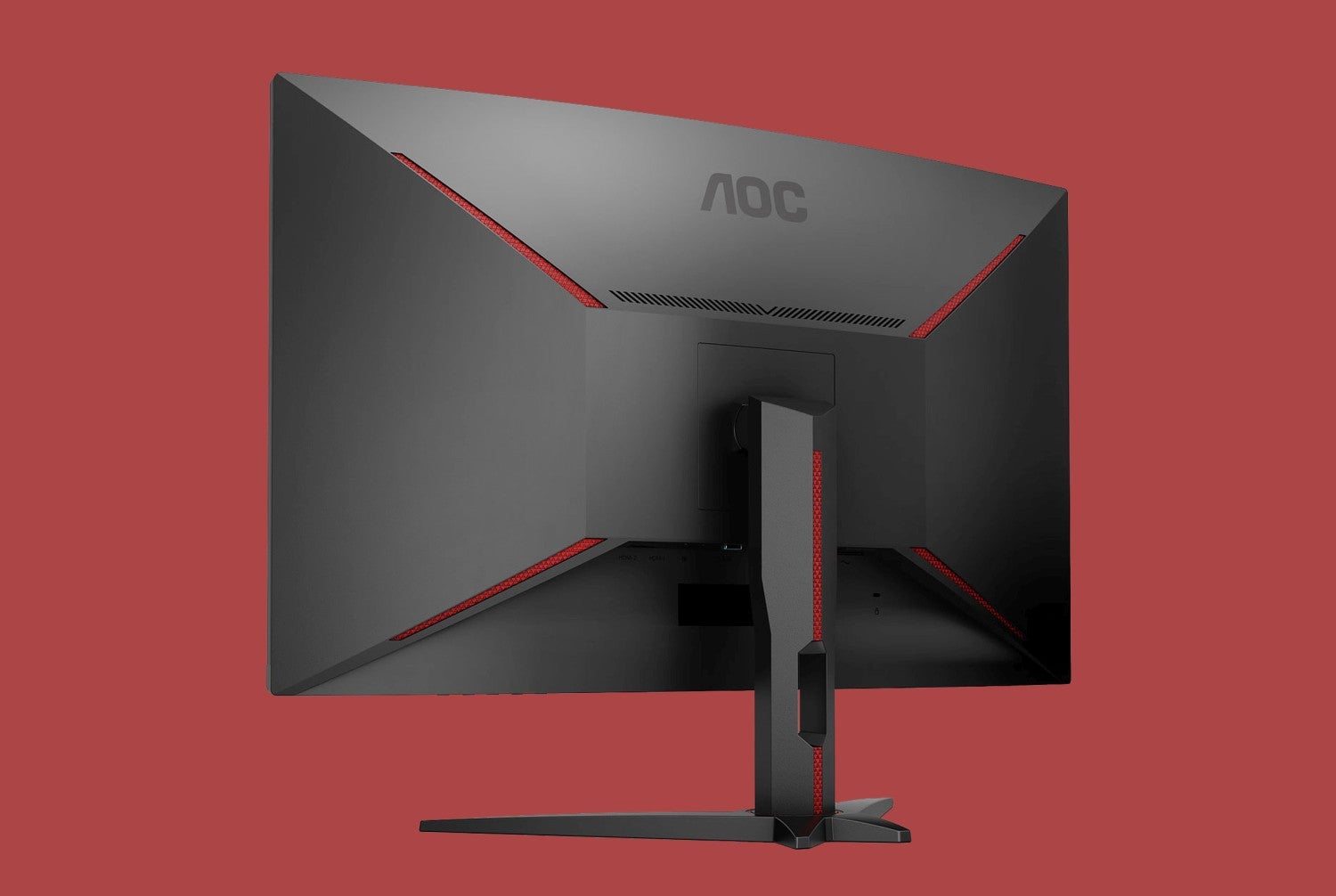AOC C32G1 Review
Key Specifications
- Review Price: £280
- 1920 x 1080 resolution
- 144Hz Refresh rate
- AMD FreeSync
- 1 x DisplayPort, 2 x HDMI
- 32in VA panel
- 1ms response time
What is the AOC C32G1?
The AOC C32G1 is one of the more affordable 32-inch gaming monitors on the market right now with a price of £280. That sounds great on paper, as do its curved design and AMD FreeSync – but do cut backs in other areas prove one too many?
AOC C32G1 – Design and features
For starters, the AOC deploys a 1920 x 1080 resolution across its 32-inch diagonal. That, to put it mildly, is a double-edged sword.
On a positive note, the resolution is fine for gaming and movies – it delivers enough screen real estate for triple-A titles and eSports games in equal measure.
And, from a technical point of view, the relatively low 1920 x 1080 resolution means that a wider range of graphics cards will be able to run demanding games at playable frame rates. That’s especially important for AMD FreeSync, which peaks on this monitor at 144Hz – because the higher the frame rate goes, the more benefit you’ll get out of AMD’s technology. However…
…the Full HD resolution and 32-inch diagonal do mean that the AOC delivers a poor density level of 69ppi. While that’s high enough for gaming, the panel isn’t particularly sharp or crisp; plus it makes it easy to spot pixels.
Smaller screens with similar resolutions offer better levels of density – and, therefore, are sharper. AOC’s own G2790PX now costs £260, and its 1080p resolution and 27-inch diagonal gives it a pixel density of 82ppi.
If you want a 32-inch screen that has a higher resolution and a sharper look then that’s entirely possible, too. The BenQ EX3203R costs £469, but its 2560 x 1440 resolution and 32-inch diagonal give it a 94ppi density level – noticeably crisper than the C32G1. And, if you want to stick to the AOC’s budget, there are plenty of 32-inch screens with 1440p displays for around £300..
Get beyond the resolution issue and you’ll find a screen with solid gaming credentials. AMD FreeSync works on a range of 48Hz-144Hz using DisplayPort, which means you’ll get butter-smooth gaming across the board. The higher the frame rate, the better though, and the technology only works on AMD graphics cards. If you have an Nvidia GPU, you can use VSync at 144Hz, but not FreeSync.
The underlying panel uses 8-bit VA technology. That hardware provides a good halfway house between the image quality of IPS and the speed of TN, although it doesn’t tend to be as speedy as the latter hardware – so VA is good for mainstream gaming rather than eSports. The AOC G2790PX does have TN hardware.
AOC claims a 1ms response time for this screen, but the firm said the same about its C27G1 screen – and that panel exhibited minor ghosting in particularly fast moments unless overdrive settings were employed. That’s the kind of thing I wouldn’t want to see, especially for eSports.
And, as usual with AOC’s current crop of gaming monitors, the C32G1 has a gently curving design. The 1800R radius has a minor impact on gaming immersion without distorting images – something that the pricier BenQ also offers.
The curve isn’t the G32G1’s only bit of familiar physical design. The monitor has narrow bezels on three sides of the screen, and most of the display is built from matte black plastic. The bottom of the screen, the rear and the base are augmented with red accents, but they’re not intrusive. The AOC does look like a gaming screen, but it isn’t what we’d call ostentatious.
Around the rear of the screen are two HDMI 1.4 connections and a single DisplayPort 1.2 input. There’s also a D-SUB connection for older hardware, plus a headphone jack.
Those ports face downwards, though, which makes plugging in a little tricky. But that’s your lot for connectivity – there are no USB ports on this screen, and no speakers. There are no headphone hooks or handles.
The AOC’s connectivity is a little basic then, with no USB and few extra gaming features. That’s fine if all you want is a basic panel, but the BenQ was a little better thanks to the inclusion of USB. The AOC G2790PX had more USB ports, and speakers.







0 Comments